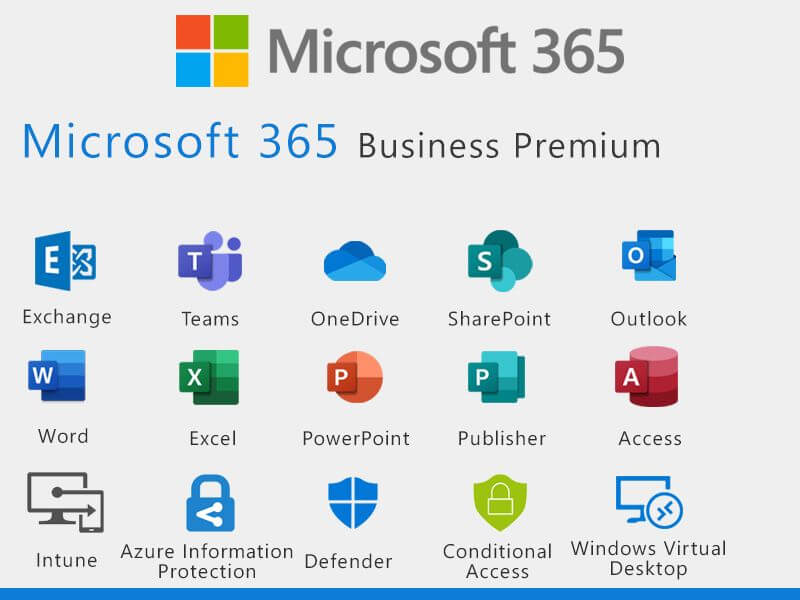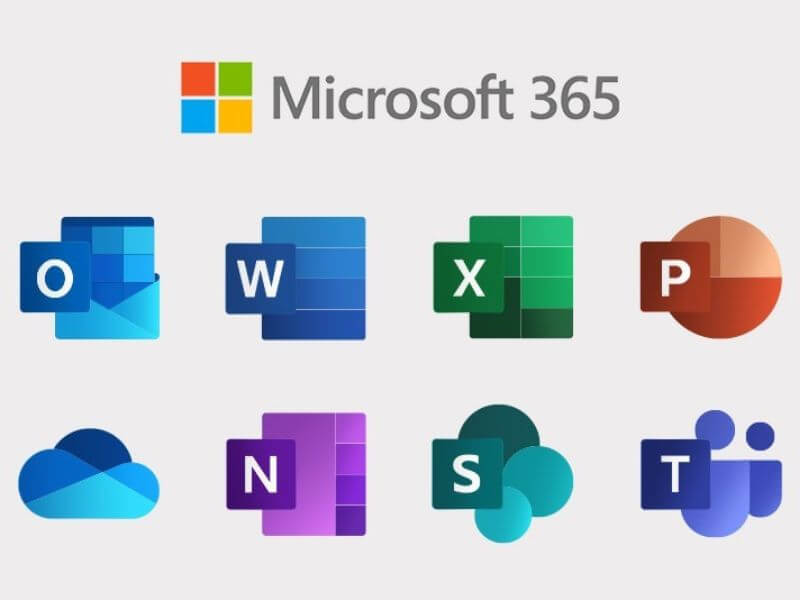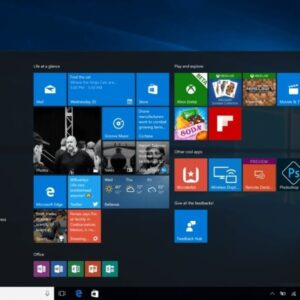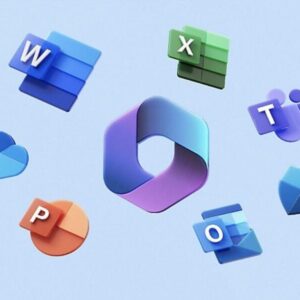What Microsoft 365? Microsoft 365 is a product family of productivity software, collaboration and cloud-based services owned by Microsoft. It encompasses online services such as Outlook.com, OneDrive, Microsoft Teams, programs formerly marketed under the name Microsoft Office (including applications such as Word, Excel, PowerPoint, and Outlook on Microsoft Windows, macOS, mobile devices, and on the web), enterprise products and services associated with these products such as Exchange Server, SharePoint, and Yammer. It also covers subscription plans encompassing these products, including those that include subscription-based licenses to desktop and mobile software, and hosted email and intranet services.
The branding Office 365 was introduced in 2010 to refer to a subscription-based software as a service platform for the corporate market, including hosted services such as Exchange, SharePoint, and Lync Server, and Office on the web. Some plans also included licenses for the Microsoft Office 2010 software.
Upon the release of Office 2013, Microsoft began to promote the service as the primary distribution model for the Microsoft Office suite, adding consumer-focused plans integrating with services such as OneDrive and Skype, and emphasizing ongoing feature updates (as opposed to non-subscription licenses, where new versions require purchase of a new license, and do not receive feature updates).

What Microsoft 365?
As a product line, Microsoft Office dates back nearly three decades, with early versions essentially combining Word, Excel, and PowerPoint into a discounted bundle. Microsoft 365 (previously known as Office 365), which has been available since 2011, differs from that old-fashioned bundle in two respects: First, it’s sold as a subscription (billed monthly or yearly), rather than as a perpetual license with a fixed one-time payment. Second, it combines a suite of online services, including business-class email, cloud file storage, and secure communication tools along with the traditional desktop apps.
Because it’s a subscription offering, those desktop programs are updated automatically when a new version is available. If your subscription is current, you get the latest versions, with security releases monthly and feature updates every six months, on the same calendar as Windows 10.
Microsoft 365 is available in Family and Personal editions (previously known as Office 365 Home and Personal, respectively) that are intended for use by families, students, and individuals for personal, non-commercial use.
In this guide, we cover the multitude of Microsoft 365 Business and Enterprise editions, which offer a more advanced feature set than the Family and Personal editions, with collaborative applications and management tools that are designed for meeting enterprise security and compliance challenges.
Which online services are in Microsoft 365?
The exact mix of apps and services available with a Microsoft 365 subscription depends on which edition you’ve chosen. The following five services are common to all business and enterprise plans:
Exchange Online
This business-class email offering gives every Microsoft 365 subscriber in your organization a mailbox with a maximum capacity of 50 GB or 100 GB, with the ability to access email through a web browser or using the Outlook app on Windows, on a Mac, or on mobile devices. Malware and spam filtering are built in, as are basic features like shared mailboxes and (for some Microsoft 365 subscriptions) advanced features like eDiscovery.
OneDrive for Business
Every Microsoft 365 business subscriber gets 1 TB of personal OneDrive for Business storage, with sync clients available for every desktop and mobile platform. The Windows 10 client uses the same sync client as the consumer OneDrive service, keeping data in a separate location. The Files on Demand feature allows users to view and manage cloud-based storage using File Explorer. Administrators of Enterprise plans can upgrade users to unlimited storage if a terabyte is not enough.
SharePoint Online
The SharePoint interface is now sleek where it was once clunky, allowing teams to share files and sync information in File Explorer using the same desktop client as in OneDrive for Business. Both SharePoint and Exchange Online include administrative controls to restrict users from sharing confidential information outside the organization.
Microsoft Teams
This collaborative platform replaces the older Skype for Business service, offering unified communications, HD video conferencing, and instant messaging for Microsoft 365 subscribers in an organization, along with a team-and-channel-based architecture that covers much of the same feature set as alternatives like Slack.
The free version of Teams allows small businesses to use the service without having to pay any license fees. Usage of Microsoft Teams has expanded dramatically since early 2020, when pandemic-related shutdowns made it an ideal choice for remote-work scenarios. The developers behind Teams have been shipping new features monthly for desktop, mobile, and web-based apps.
Additional services
Some Microsoft 365 plans include services targeted for specific audiences. The Microsoft 365 Business Standard and Business Premium plans, for example, include services for small and medium-sized businesses; these tools include Microsoft Bookings, which allows customers to schedule and manage appointments, and MileIQ, a mileage-tracking service.
All Enterprise plans include the Yammer social networking service and a selection of business automation tools, including Microsoft Power Apps to build custom forms, Power Automate to streamline repetitive workflows, and Power BI Pro, an advanced business analytics tool.

Which desktop apps are available in Microsoft 365?
Every Microsoft 365 plan that includes desktop apps offers the following Office applications for all supported versions of Windows and for MacOS: Outlook, Word, Excel, PowerPoint, and OneNote. On Windows PCs only, Access and Publisher are available. Microsoft recently announced plans to include a “lightweight” version of Visio with its business plans. These apps are updated automatically to the latest version, with monthly security updates and twice-annual feature updates.
Microsoft 365 subscriptions provide per-user licenses, which means that the apps can be installed and used on up to five phones, five tablets, and five PCs or Macs simultaneously. From their personal subscription portal, a user can sign in using their Microsoft 365 credentials and manage installs without having to enter product keys or worry about activation. By contrast, perpetual-license versions of Office are typically licensed for use on one device only and cannot be transferred.
Web-based versions of Word, Excel, and PowerPoint offer fairly robust tools that allow editing of files stored in OneDrive for Business. These tools work in any modern desktop browser without requiring additional software. Most business plans also offer Outlook on the web.
When you sign in with an active subscription on mobile devices (iOS and Android) , a new unified Office app offers a single place to create, view, and edit Word, Excel, and PowerPoint files. The Outlook app provides a unified view of business and personal email and calendar accounts. Mobile apps are also available for Microsoft 365 services, including OneDrive, Skype for Business, and Microsoft Teams.

Above is information about What Microsoft 365? What is this Microsoft 365 about? that we have compiled. Hopefully, through the above content, you have a more detailed understanding of Microsoft 365. Thank you for reading our post.









